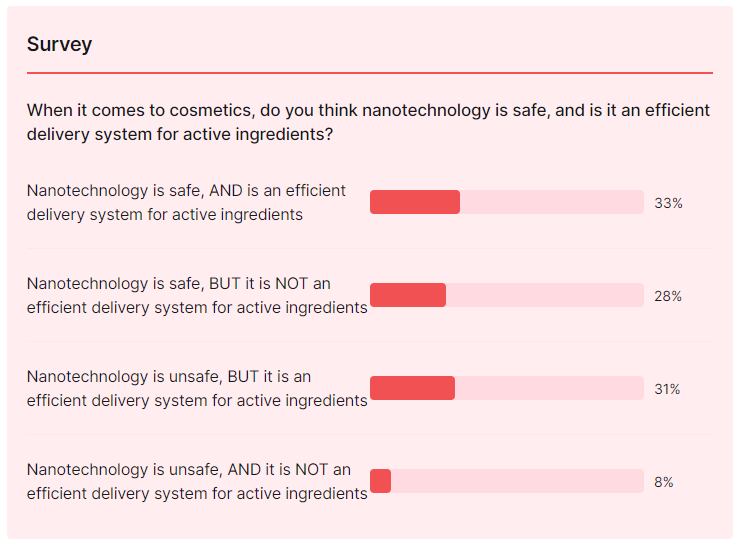
Most recently, the latest study from the University of Bath actually questions the efficacy of nanoparticles in delivering active ingredients as tests have shown they don’t even penetrate the first layer of skin.
This would dispel scare stories of nanoparticles penetrating far enough to get into the blood stream and become a health risk, but asks new questions of the efficacy of nanoparticles.
Further studies will have to be done, and nanotechnology is going to remain a key talking point as we look to provide further innovation and better science to our thriving industry.

Either way, the European Commission has highlighted nanotechnology as a Key Enabling Technology (KET); highlighting the benefits and promises, the technology can provide for the future.
As an ‘enabling technology’, the EC states that there are significant opportunities for nanotechnologies in the future, but the problems arise when discussing different types or forms of nanotechnology.
This relates to general accusations aimed at nanotechnology as a new sphere of science which has not been subject to enough safety testing to make it safe for widespread human use; however in some cases, such as sunscreen, it has been safely used for years.
As there is no single nanotechnology-industry it means there is always a continuum of quality research that has to be carried out which requires wide scale cooperation between various industrial sectors.
A question of regulation
Earlier this year, Cosmetics Design was invited to the personal trade association, Cosmetics Europe’s headquarters in Brussels, and discussed the state of play concerning nanotechnology in the industry.
President Fabio Franchina pointed out that despite the growth in application, there is still a lot of uncertainty about the potential risks of nanotechnology and that a major problem remains in finding a definition of what nano is.
Also discussing the topic, director general, Bertil Heerink remained upbeat that the progression in science will aid future definitions and safety regulation of nanotechnology.
At this year’s in-cosmetics show in Barcelona, where solar beauty was the key theme, we also caught up with Dr Ian Tooley from Croda who said that consistent regulation of nanotechnology is particularly important in sun care.
Regulation is one of the key things to consider in sunscreen formulation, and particularly regulations around nanotechnology.
On the other side of the pond, a group of US senators has asked the FDA to reverse its decision to delay sunscreen rules and put new standards in place.
The group, led by Jack Reed, a Democratic representative from Rhode Island, sent a letter to FDA in a bid to ensure sunscreen labels are clear, accurate and provide consumers with the information they need to protect themselves. It seems this is a worldwide issue that needs to be dealt with.
Whatever your stance on nanotechnology, there is no doubting that there is a lot of issues to be ironed out. We’ve only just scratched the surface…
